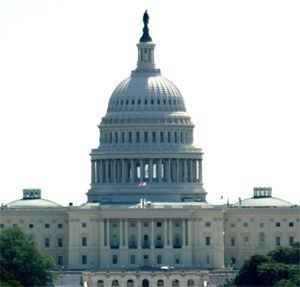I spent much of this past week responding to two rather lengthy interviews conducted via e-mail. Both are expected to be published soon (one is being translated into German). When they appear I’ll pass along the links.
A number of the questions sparked some fresh thoughts and new analysis. Invited to comment on the recent UN climate summit in Durban, for example, I had to confess that I haven’t read the ‘consensus document’ it produced.
Time has been my scarcest commodity for many months now, which means there are numerous other important documents I similarly haven’t had a chance to examine. But as I answered that question I realized that I’ve stopped taking the UN climate machine seriously. Here’s why:
- The UN campaign to regulate greenhouse gas emissions was officially launched back in 1992, at the Rio Earth Summit. That was long before climate science had matured, before it had come to any unequivocal conclusions.
- This means that UN bureaucrats decided all on their own – without the benefit of a scientific justification – that emissions should be reduced. They further decided that the way to accomplish that goal was via a grand global treaty.
- Rather than concentrating on the handful of countries which, between them, account for the vast bulk of global emissions, the UN bureaucrats were intent on a scheme that involved all UN countries.
- This is worth noticing. If your goal is to tackle an environmental problem connected to industrialized societies, why would you insist that impoverished African nations – whose populations continue to perish due to a lack of a public health infrastructure – had to be at the table? Surely it’s obvious to everyone that reaching an agreement between 190 countries is far more difficult than finding common ground among half-a-dozen.
- Nevertheless, that is the approach the UN adopted. Governments of the world signed-on to the general idea of emissions reduction when they became party to the United Nations Framework Convention on Climate Change (often called the UNFCCC) in Rio in 1992.
- Step two was the Kyoto Protocol. Adopted in December 1997, it entered into force in early 2005. But the inconvenient truth is that it was doomed from the beginning.
- The reason Kyoto could never accomplish its goal is because the world’s largest economy – and at that point the largest emitter of carbon dioxide – had made it clear such an agreement was out-of-the-question.
- According to the United States constitution, no treaty is binding unless it has received the blessing of the Senate. It doesn’t matter what the President (at that point his name was Bill Clinton) or the Vice-President (Al Gore) wants or believes. What matters is how the majority of US senators vote.
- In July 1997, five months prior to the fanfare in Kyoto, the US Senate had already passed the Byrd-Hagel resolution. The vote was 95-0. Let me repeat: the vote was unanimous. It was bi-partisan. This resolution made it clear that not a single Democrat or Republican senator was prepared to support an emissions agreement that would harm the US economy while ignoring the growing emissions of up-and-coming economies such as China and India (see here, here, and here).
- Had US senators all danced naked on the dome of the Capitol Building while blaring the news through trumpets they could not have sent a clearer message that the Kyoto approach was a no-go.
- That was 14 years ago.
- So how have UN bureaucrats spent the past decade-and-a-half? According to these same people, climate change is a planetary emergency and time is running out. So did they abandon the idea of a global emissions treaty and pursue a Plan B? Did they move heaven and earth to find an approach that would be acceptable to US senators and would therefore enlist the participation of the world’s largest economy?
- Uh, no. Instead, UN bureaucrats (and their close friends in the environmental movement) have spent the past 14 years pretending – against all evidence – that a Kyoto-style treaty was somehow achievable. Thousands of them have flown off to exotic locales at regular intervals to hold climate summit after climate summit. Again and again they’ve pretended for the TV cameras that reaching such an agreement was a realistic expectation.
- What, exactly, have these people been smoking?
- Or, to use a phrase from my undergraduate days in women’s studies – Which part of ‘no’ did they not understand?






